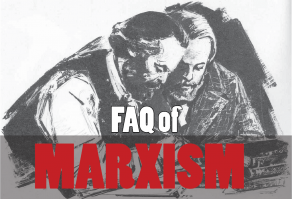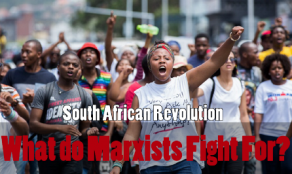Yesterday, 19 March 2014, South Africa’s largest union, the National Union of Metal Workers of South Africa (Numsa) held a one-day strike and national day of action to denounce the policies of the African National Congress (ANC) government which it accuse of “subsidizing capitalists” with tax payers’ money.
Crucially, the strike comes weeks before the national general elections of 7 May. It also comes shortly after the union decided to suspend political support of the ANC at its historic special congress of December 2013. It is therefore obvious to see that the strike has clear political implications. These could be seen in the periodic outbursts of attacks (especially in song) by the workers which targeted especially the president of the country.
The strike also coincided with the release of the "Nkandla Report", a report by the office of the Public Protector which made damning findings against President Jacob Zuma who benefited unfairly from misnamed "security upgrades" to the tune of an astronomical R215 million.
The union, with more than 340,000 workers, mostly metalworkers, held marches and protests in seven major cities. This was the first of a series of strikes and protests planned for the year by the union to fight back against anti-worker policies implemented by the government. The declared enemy is the Employment Tax Incentive Act (commonly known as the Youth Wage Subsidy), which has been in force since December and which provides exemptions and tax benefits to companies hiring young workers. Memorandums of demands were handed over in Johannesburg, Cape Town, Durban and Pretoria.
South Africa has one of the world’s worst youth unemployment rates. Around 3.6 million people between the ages of 15-29 are without a job. 71% of all unemployed people are between the ages of 15-29.The majority of them are women. The massive youth unemployment is one of the key drivers of the community protest actions that have engulfed the country in the last six months. The severity of the problem is really hammered home when one considers the fact that more people depend on social welfare than the number of people in employment.
In Johannesburg, Jan Smuts Avenue, which is one of the major roads of the city, was brought to a complete standstill as a sea of red flooded the leafy areas of Rosebank.
The workers were addressed by the union’s general secretary Irvan Jim. After taking a swipe at the monopolizing of the country’s resources by a small elite, Jim criticised President Jacob Zuma and the ANC’s deputy president Cyril Ramaphosa: “Their role is to hold back the wheels of history. They have refused to nationalise the country’s resources.” He said the working class was not willing to accept the tax incentive act. “They (the government) must know that the working class are not fools,” he said.
A summary of the memorandum of demands that Numsa delivered to representatives of the department of trade and industry, the labour department, the economic development department and the treasury, said the Employment Tax Incentive Act (ETIA) would not work.
“The ETIA will fail to solve the crisis of unemployment. It subsidises employers for taking on workers whom they would have employed anyway,” Numsa said. “It will not encourage real employment creation. It discourages decent work. It will lead to the displacement of unsubsidised workers.”
These sentiments were repeated by the striking workers. “We hope that government will hear our concerns,” said John Mahana, 40, a machine operator who joined a rally in a Johannesburg park. A state plan to subsidize youth wages to boost hiring “does not address the question of decent work.”
In Durban the suspended general secretary of the labour federation Cosatu, Zwelinzima Vavi addressed thousands of striking workers. Vavi, who faces major battles with Cosatu’s right wing who are hell-bent on removing him permanently as general secretary, used his address to highlight the worsening social conditions for the workers and the poor. He pointed out that in 2004 the unemployment rate was 23%, but that this had increased to 24.7% in 2013. He also stated that the number of people living on R524.00 a month increased from 22 million in 2004 to 26.5 million in 2011.
He further stated that the Youth Wage Subsidy is not a solution for “structural” unemployment and that unemployment constitutes a ticking time bomb which is beginning to explode as can be seen by the large number of community protests.
Addressing the crowd, he said: “The youth subsidy is a wrong intervention because it wrongly assumes South Africa is facing a high wage economy. This is not true because in 2011 half of South African workers earned below R3033 per month. Yet rough estimates for a national minimum level (MLL) are around R4500 a month. So those living below this figure – more than 60% of workers – are living in poverty. Minimum wages set through Sectoral Determinations are even further below the MLL – at R2118, while the minimum wages set at the Bargaining Councils are not much better – at R2725. And most of the workers earning these low wages have to support as many as ten dependent, unemployed family members. This counters the phoney argument that employed workers have become a privileged elite, with different interests than the unemployed. On the contrary their interests are closely intertwined.”
He went on to explain the implications of the scheme. In reality, employers will employ more young workers, line their pockets with the generous subsidy, while retrenching an equal or greater number of older workers and thus create no more jobs overall. Then, when these new young workers reach the age limit for the subsidy they can be thrown out and replaced by a new set of subsidised workers.
There is no empirical evidence that this policy has worked anywhere in the world. In 2011 the ILO reported that “research in various countries has shown that wage subsidies lead to combined deadweight and substitution effects of the order of 70-90% of the number of jobs created.
“Deadweight losses occur when a subsidy is paid for unemployed persons who would have been hired anyway, without the subsidy. Substitution means the replacement of older, unsubsidised workers by younger workers for whom the employer gets a subsidy.
“A National Treasury estimate puts the deadweight loss alone to be 58%, i.e. 58% of the promised jobs from the subsidy would have been created without the subsidy.”
However, there were some issues that could lead to problems, if not corrected in time.
First, the strike was originally planned for 26 February. At the time the union postponed it to 19 March alleging that it could not get the necessary permission in time. The strike clearly had huge support. It was certainly bigger than the Cosatu strike in November. But it could have been even bigger. One of the factors that led to this could be because of the postponement. Numsa plans to have a whole series of these kinds of actions and strikes for the year ahead. It should clearly communicate the date and time of these and stick to them. There is nothing more frustrating for a worker to prepare for a strike only to be told that it has been postponed or called off.
Another question that the union needs to ask is: where to from here? The strike was successful in raising the consciousness of the working class on this issue. But in order to force the government to repeal this act, a whole plan of struggle and programme of action must be drawn up and clearly communicated with workers on the shop floor.
But ultimately this action must be linked to the question of abolishing the capitalist system, and not just the “neo- liberal” model. The problem is not this or that model of capitalism or any “structural” deficiency in the economy, but the entire system.
Marxists support the actions of Numsa. These kinds of schemes do not work. As we reported in an earlier article, even bourgeois institutions like the World Bank conceded this. After the 2008 economic crash the national states, especially in Europe and the United States, also came out with schemes to “encourage” the banks to start investing in the economy. That did not happen because of the crisis of overproduction. This scheme of the government is in the same mould. This is further proof of the parasitic nature of capitalism in its senile decay. For decades we were bombarded with propaganda about the bourgeois being “wealth creators” and “job creators.” Now, in its decline the bourgeoisie needs to be “encouraged” to create jobs. This shows the urgent need for the overthrow of this rotten system.


